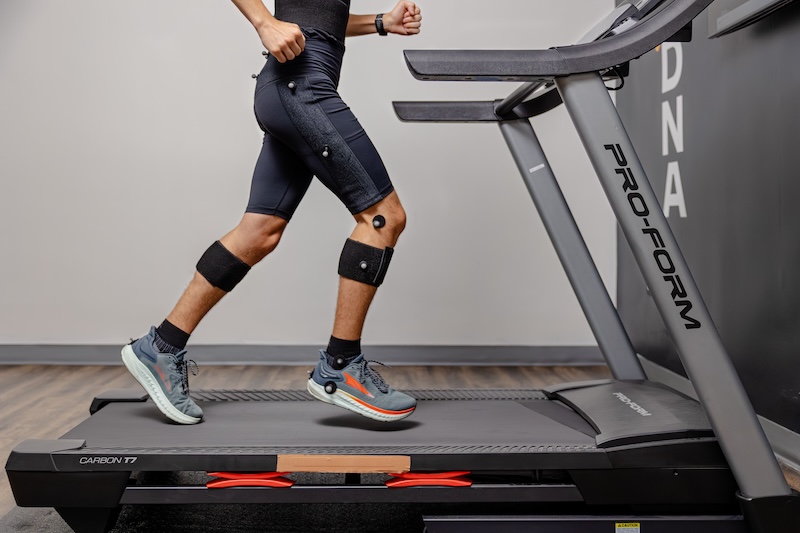
Unlocking the Power of Helix 3D for Running Gait Analysis in Physical Therapy

When it comes to physical therapy, understanding a patient’s movement is crucial for crafting effective treatment plans. Advances in technology have brought sophisticated tools to the table, with Helix 3D being at the forefront for running gait analysis. This cutting-edge tool has revolutionized the way clinicians understand biomechanics, helping both athletes and everyday individuals get back on their feet and perform at their best.
What is Helix 3D?
Helix 3D is a highly advanced motion analysis system designed to provide a comprehensive, three-dimensional view of human movement. By using infrared cameras and sophisticated software, Helix 3D captures movement in real time and creates a digital model that therapists can analyze. Unlike traditional two-dimensional assessments, Helix 3D provides a more in-depth look at how every joint, limb, and muscle contributes to the overall movement pattern.
This technology is often used for running analysis, allowing practitioners to understand the root causes of movement dysfunction, reduce injury risk, and enhance performance.

How Helix 3D is Used for Running Analysis
Running and gait analysis using Helix 3D offers significant insights into how your body moves. Here’s how it works:
- Data Collection
The process begins with placing reflective markers on key points of the body—usually at joints such as the knees, ankles, hips, and shoulders. Multiple infrared cameras capture the reflection from these markers, creating a real-time three-dimensional model of the body in motion. The technology works well in analyzing various activities, from walking to sprinting.
- Comprehensive Biomechanical Evaluation
As the person walks or runs on a treadmill, Helix 3D records data on each aspect of movement, including stride length, joint angles, rotation, and timing of each phase of the gait cycle. It provides a granular look at body mechanics, highlighting asymmetries or irregularities that might not be evident in basic visual analysis.
- Pinpointing Issues
Helix 3D makes it easier for physical therapists to identify the underlying issues that might contribute to injury or pain. For example, an athlete dealing with recurring knee pain may have subtle misalignments in their hip movement that cause stress further down the kinetic chain. By visualizing the movement in 3D, therapists can pinpoint exactly where these issues originate.
Benefits of Using Helix 3D in Physical Therapy
- Personalized Treatment Plans
One of the greatest advantages of using Helix 3D is the ability to create a more personalized treatment plan. The information gained through this analysis helps therapists develop specific exercises and interventions targeting the exact issues identified. This means patients can receive treatment tailored precisely to their needs, improving outcomes significantly.
- Injury Prevention
Helix 3D doesn’t just help those already dealing with injuries; it’s an excellent tool for injury prevention. By detecting subtle gait abnormalities that may contribute to future injuries, therapists can address these concerns proactively. This is particularly important for runners, who are prone to overuse injuries and repetitive strain.
- Performance Enhancement for Athletes
For athletes, movement efficiency is key to both performance and longevity. Helix 3D allows coaches and therapists to fine-tune an athlete’s gait and running mechanics for peak efficiency. Even minor tweaks in form can lead to major performance gains, reduced energy expenditure, and lower injury risk.
- Real-Time Feedback
Another powerful feature of Helix 3D is its ability to provide real-time visual feedback. Patients can see how they are moving, making it easier for them to understand their movement deficiencies and actively work on correcting them. This interactive approach helps engage patients in the rehabilitation process, speeding up recovery.
The Future of Movement Analysis
Helix 3D has been a game changer in both clinical and sports settings, and its impact will likely grow as more professionals adopt the technology. With increasing accuracy and ease of use, three-dimensional motion analysis has the potential to become a standard in all physical rehabilitation settings, leading to better treatment outcomes and healthier movement for everyone—from elite athletes to those simply looking to live pain-free.
Final Thoughts
In physical therapy, understanding how a patient moves is often the key to unlocking the cause of their pain or limitations. Helix 3D provides a window into the complexity of human motion that previously was unattainable, allowing for personalized care that’s based on real data. Whether for rehabilitating injuries, improving athletic performance, or simply ensuring someone can walk comfortably, Helix 3D is helping revolutionize the field of movement science. By leveraging this technology, physical therapists can offer more effective, individualized care, ultimately getting patients back to doing what they love faster and with greater confidence.
Assessment Options
The Complete Runner Assessment:
-90 minute evaluation
-Full orthopedic evaluation
-3D Helix Gait Analysis with written report
-Individualized prescription exercises
-3 months of online coaching
$200
The Run Only Assessment:
-45 minute evaluation
-3D Helix Gait Analysis with written report
-Individualized prescription exercises
-1 month of online coaching
$100
Gait Screening Only
-15 minute 3D Helix Gait Analysis with written report
$50
To prepare for your assessment, please bring your running shoes (up to 2 pairs) and wear running shorts or tights. Please avoid wearing any reflective clothing or jewelry as it will need to be covered.
